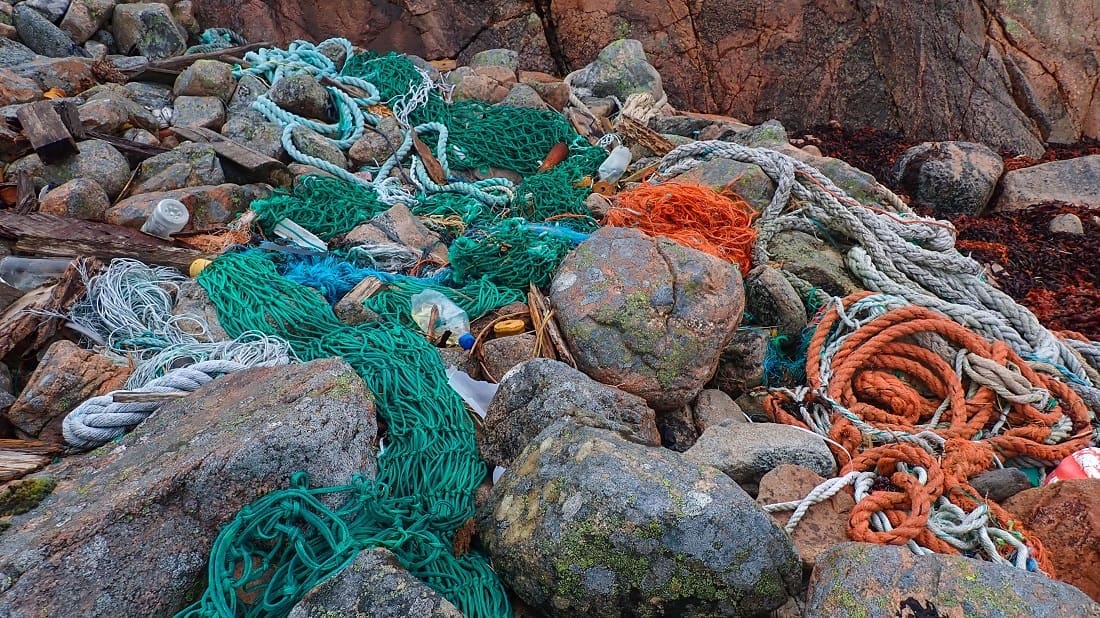Norway’s long, rugged coastline – more than 28,953 kilometers long, including the fjords – suffers from plastic pollution even though it is so remote. It’s a problem plaguing all nations of the world.
By Norwegian University of Science and Technology (NTNU)
Plastic items from around the world are continuously washing ashore on Norwegian coastlines. This reflects a much larger systemic issue facing the nations of the world.
Scientists have long reported the consequences of plastic pollution and the urgent need for intervention, but global plastic production and consumption continue to rise.
This underscores the importance of Norway’s advocacy for a global agreement that guarantees stopping the flow of plastics into the environment.
But Norway also has a responsibility in generating plastic pollution.
In a study conducted with the Norwegian Air Research Institute (NILU), researchers from the Norwegian University of Science and Technology attempted to map the Norwegian plastic cycle at high resolution– down to the product and polymer types.
Norway releases 15 000 tons of plastic to the environment each year
According to a recently published study in Environmental Science & Technology, around 758 kilotons (kt) of plastics enter the Norwegian market every year, while 632 kt is discarded as waste.
Almost the half of this waste is incinerated, and only 2.4% ends up in the environment.
Although 2.4% may seem insignificant, when translated into absolute masses, it equates to a substantial 15 kt, or 2.8 kg per capita.
On average, Norwegians consume 21% more plastics compared to Europeans and generate twice as much plastic pollution as the Swiss; this is equivalent to a staggering 1.5 billion plastic bottles that reach the environment each year.
Norway is pushing for a global agreement
Action against plastic pollution is finally gaining momentum as nations negotiate an internationally legally binding instrument for limiting plastic pollution.
By co-chairing the High Ambition Coalition to End Plastic Pollution together with Rwanda, Norway is setting the bar high.
But what can Norway do at home?
According to our study, there are two major pollution sources from the Norwegian economy:
- Consumer packaging: The biggest source of macroplastics.
- Tire wear rubber: Electric and hybrid vehicles have the worst performance.
Consumer packaging is the main “culprit”
Our study shows that the majority of macroplastics, items bigger than 5mm, mainly originate from consumer packaging, such as bottles and bags. Plastic packaging items are also among the most commonly found along Norwegian coastlines.
Efforts to limit the release of these products (e.g., decreasing littering and dumping, and increasing road sweeping) are completely overshadowed by high consumption rates.
We simply use more than what we can collect.
It is therefore essential to reduce plastic consumption in these categories to curb this pollution source.
Tire wear particles: a big source of microplastics
We have identified tires as a significant contributor to microplastic pollution, with approximately 6 kt of tire wear rubber released annually.
Capturing these particles is extremely challenging due to the nature of their emission.
The study emphasizes rethinking mobility and transport choices as key to reducing this pollution source. Shared mobility options, such as public transport, are indeed part of the solution here.
Designing lighter vehicles and exploring alternative materials can also be effective to some extent.
Norway’s electric and hybrid vehicle fleet has rapidly expanded in recent years. While they produce lower carbon emissions, their heavier weight compared to conventional vehicles increases tire wear particle emissions.
Oceans choked by plastics
Why is plastic pollution so bad?
As a coastal nation, Norway’s land-based plastics can easily reach the ocean, given its high population concentration along fjords and long coastlines.
While the greatest percentage of plastic released to the environment ends up in the soil, nearly one-third ends up in the marine environment. Also, a large part of what is deposited in soil will ultimately make its way to the ocean over time.
Marine plastic pollution has long been shown to cause irreversible impacts on ecosystems.
Animals often become entangled in or ingest plastic fragments. Fragments can act as a carrier of invasive species, and plastic debris has also shown the ability to interfere with the marine carbon cycle, further exacerbating climate change.
Plastic pollution is very toxic
To make matters worse, plastic products also contain a mixture of additive substances that are intentionally introduced during production to achieve specific properties.
The study has demonstrated that high amounts of toxic additives, such as phthalate esters and organophosphate esters, are potentially released to the environment alongside plastics. Field studies (in Norwegian) have previously detected elevated levels of short-chain chlorinated paraffins in the livers of Norwegian herring gulls (Larus argentatus) after ingesting plastics. It has been estimated that significant emissions of these substances originate from the Norwegian plastic economy.
The findings show that high additive amounts also enter recycling processes. This is problematic since plastic recycling can reintroduce these additives back to the economy.
In other words, recycled plastics can contain elevated levels of additives, which poses an additional risk to human health and the environment.
An urgent need for action
This research shows the importance of restraining plastic production and consumption and addressing the use of hazardous chemical additives.
Policies at home need to be imposed to limit the environmental consequences of the plastic economy.
This is urgent, and it has been urgent for a long time.
More information: Marhoon, A., et al., ‘Mapping Plastic and Plastic Additive Cycles in Coastal Countries: A Norwegian Case Study’, Environmental Science & Technology (58, 19, 8336–8348; 2024); DOI: 10.1021/acs.est.3c09176. NTNU Press Release. Featured image: This photo from Marsund, a small fishing village in Trøndelag county Norway illustrates the plastic pollution problem perfectly. From fishing ropes to plastic bags, plastic trash accumulates on shorelines and in bays across the globe. Credit: NTNU




